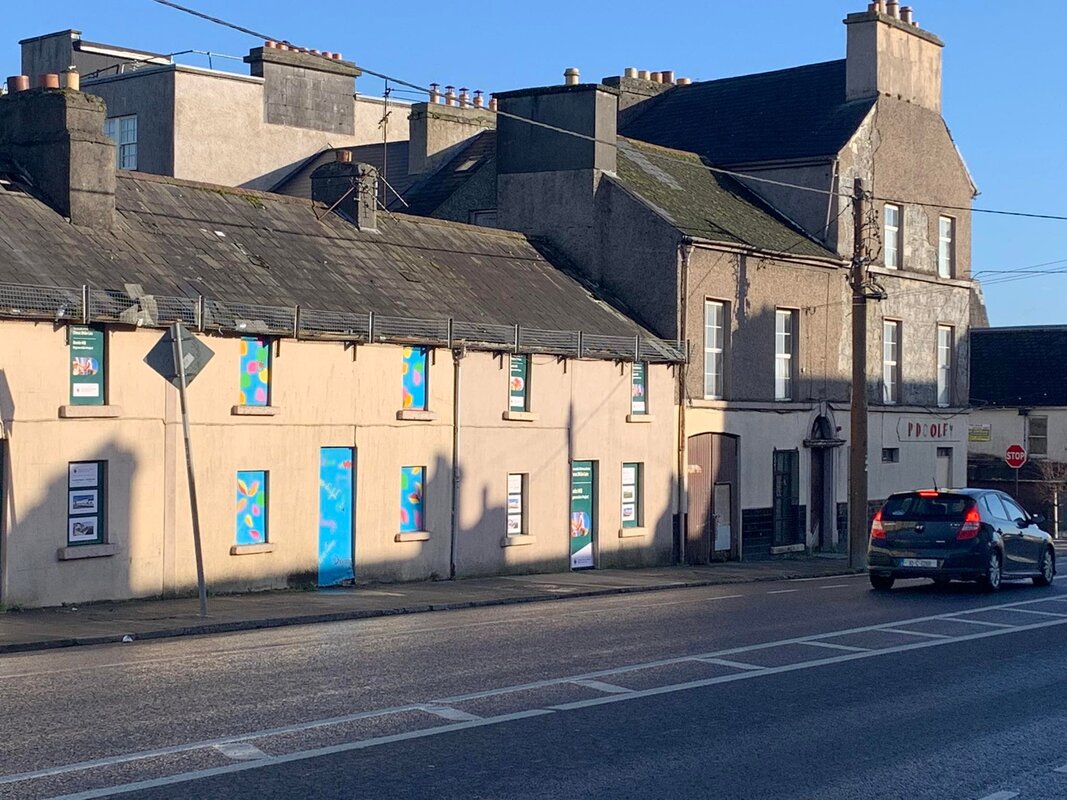|
One of the largest town centre residential regeneration projects in recent memory undertaken by Galway Council is happening between Dooley’s Corner and the Mount.
32 new residential units are to be completed on the site with a part 8 planning application due before the full Council at the end of April this year. The project is being fast-tracked and funded under the Social Housing Development Fund. Cathairleach Cllr. D. Connolly supported by his Municipal District Colleagues have been trying to ensure that an important national and international Heritage and Cultural attribute to the site be formally marked. Eugene Watters, (Eoghan Ó Tuairisc) was born on 3rd April 1919 in the third house from Dooley’s Bar. Educated locally at the Boys School in the rear of the Town Hall and obtaining a scholarship to Garbally, where he excelled in Irish, Latin and Greek he qualified as a national teacher, and started in a boys’ school in Rathfarnham in September 1939, and the following year he enrolled in the extra-mural BA course at UCD. While he had been writing since his time in Garbally, it was in the years from 1946 to 1960 that Eugene developed as a prolific author. Articles, pantomime scripts, poems and short stories flowed from his pen, the latter mostly inspired by characters and incidents recalled from his earlier years in Ballinasloe, where he and wife Una would holiday each year; boating and fishing on the River Suck. Leaving teaching to focus on writing - from 1961 onwards the emphasis shifted to Irish, and in that year his first play in the language, De Réir na Rúibricí (According to the Rubrics) was produced at both the Taibhdhearc in Galway and the Damer in Dublin. Two years later Eugene was appointed editor of Feasta, a literary magazine published by the Gaelic League. His first wife died prematurely in 1965 and he came back to Ballinasloe to live with family in the Canal Basin but continued to write. On 28th December 1972 he married Rita Kelly, a budding creative writer and a daughter of Peter Kelly, Brackernagh, and the couple went directly to take up residence in the South East. In August 1981 they moved to another house, this time on the main road to Carlow. Their last move was to “The leap” near Enniscorthy the following June, where Eugene succumbed to a heart attack on 24th August. Two days later he was laid to rest beside his beloved Una in Creagh cemetery. Other notable publications of his include L’Attaque, Lux Aeterna, Dé Luain, Lá Fhéile Míchíl, Infinite Variety, The Road to Brightcity, An Lomnochtán and Fornocht do Chonac. There is huge growing international academic and scholarly interest in Eugene’s work especially amongst Classical and Indigenous writers and translators as Eugene’s skills in moving seamlessly between Irish , Greek and Latin have left an indelible legacy in a lot of interpretations which have recently come to light. His penning of Aifreann na Marbh in Lux Aeterna (1964) about the Atomic Bombing of Hiroshima remains the clearest and saddest Irish poem about World War II. Ó Tuairisc's Mass is divided into nine parts: In the mind of its priest or poet, it corresponds to a single day in Dublin, August 6, 1945, the day Hiroshima was destroyed by "Little Boy," the world's first atomic bomb. It is being featured in a BBC documentary for the 60th Anniversary in three years time. The poets earlier Irish writings on his youth and reflections on Ballinasloe are being translated and being published over the coming months. At their November Meeting , Director of Services Mr. Hanrahan advised that the naming of the Dunlo Hill Housing Development would be decided upon by the Estate Name Committee. Mr. Hanrahan advised that a Badge/Plaque to Commemorate Eoghan O'Tuairisc may be possible at the house in question. Read more about Eugene Watters in our Heritage Section
0 Comments
Leave a Reply. |
CLICK HERE to read the Latest Ballinasloe News Articles
June 2024
|
The Town Team was set up by BACD Ltd. to revive the fortunes of Ballinasloe and its hinterland. With the main focus to build on the town’s many strengths, change existing negative perceptions and bring about measurable improvements in the town centre economy and its wider social value.
|
Ballinasloe Area Community Development Ltd.
Ballinasloe Enterprise Centre Creagh Ballinasloe Co. Galway |
All generic photos and images have been sourced and are free of copyright or are clip art images free of copyright. Photos of Ballinasloe have been donated by BEC. If you have any photos that you would like included on the website please email us
Copyright © All rights reserved, 2024 BACD


 RSS Feed
RSS Feed
